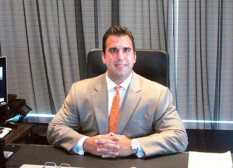
UAE students face an array of choices when determining where to pursue their undergraduate studies in a foreign country, with Canada, Britain, Australia, and the United States being the most popular global destinations for an international education.
While leaving the comforts of one’s home country and studying abroad is an educational experience in and of itself, not all options are created equally.
Students should take particular care in making what is surely the most important decision of their young adult lives, as the years spent in university are among the most formative.
For reasons of flexibility, variety of choice, culture, and resources, American education system continues to remain at the forefront of the undergraduate educational experience.
The main benefit of studying in the United States is the flexibility of the undergraduate curriculum offered by American universities. Students are encouraged and compelled to take a broad assortment of courses and are only required to declare their major at the end of their second year of studies.
They are not required to pursue the intended major they have declared on their application, which most students subsequently change their minds about at least once.
For example, recently at Penn State, according to the New York Times, 80 per cent of freshmen were undecided about their major and over half changed their minds even after they declared. American universities view this as part of the normal exploration and development processes inherent in pursuing an undergraduate education. Students at American universities are allowed to choose a minor, double major, or triple major, as long as they fulfill the prerequisite course requirements.
America is a large country, teeming with educational options and courses of study. There are over 4,000 degree-granting institutions of higher learning in the US. Arizona State University, America’s largest with over 72,000 students, offers over 250 academic programs from which to choose.
Harvard offers over 40 undergraduate fields of study, called “concentrations”, which include Folklore and Mythology, Slavic Languages and Literature, and Organismic and Evolutionary Biology, among its more curious offerings. Can’t identify a major that interests you at your university? Most will allow you to create your own.
Want to take all your classes pass/fail, have no core curriculum requirements, and receive a world-class education? Brown University, a member of the Ivy League, will allow you to do just that. In the US, you will find multiple universities that cater to every geographic, academic, and cultural preference that are almost as unique as their applicants.
There are large public universities, such as the University of Texas-Austin and the Ohio State University, which have in excess of 50,000 students, as well as elite Liberal Arts colleges, such as Harvey Mudd, whose graduates complete PhD’s in Science and Engineering at the highest rate in the country – outpacing even graduates from MIT and CalTech.
Described as a “nation of immigrants” by John F Kennedy, the United States is one of the most culturally diverse and inclusive societies in the world, welcoming visitors and students from foreign countries since before its foundation.
The student bodies of Harvard, Columbia, Penn, Yale, Princeton, Brown, MIT, NYU, Cal Tech, Boston University, and Northeastern University are comprised of at least 10 per cent international students, a number that continues to increase annually.
This diversity is further enhanced by American students, whose many religions, ethnicities, and socio-economic backgrounds add a cultural richness to college campuses which is seldom replicated in those of other countries.
No matter where you are from or what your beliefs are, you will find a similar group of people with whom you can share your values, traditions, and customs with at university. While American universities are not completely devoid of prejudices and challenges, they are much more subdued than in other nations that do not possess such a rich cultural tapestry.
Well-funded university student clubs, centered on shared interests, promote an inclusive and welcoming atmosphere open to all and the universities themselves strive to promote an environment of tolerance and understanding among its student body.
Almost all universities in the US have Islamic Student Associations and organize Friday prayers and religious celebrations for Muslim students. Religious holidays are recognized, as well as respected by administrators and professors alike, and all students are welcome to participate in all student groups.
One does not have to be of African descent to join the Kuumba Singers group at Harvard University or trace their roots to the subcontinent to participate in the university’s South Asian Dance Company. Cross-cultural participation is not only welcome, it is highly encouraged.
American universities are present in all fifty states in the US, catering to every geographic and climate preference imaginable, and emphasize the real world application of studies. If you fancy majoring in Marine Biology, you can do so at Eckerd College in Florida, where you can study dolphins and manatees firsthand through the university’s Marine Science Laboratory, located directly on Florida’s Gulf Coast. Emerson College in Boston has a very popular radio station, which is 100 per cent student-run and produced, for aspiring disc jockeys and presenters.
Some universities, such as Northeastern and Drexel, help and require students to complete paid internships in their intended field of study as a requirement for graduating through their popular Co-Op programs. Cornell University, an Ivy league School, has the finest Hospitality school in the country, helping place its graduates in top hospitality management trainee programs throughout the world.
Unlike their foreign counterparts, US universities largely fund their operations through their endowments - not through government contributions. American alumni have a tradition of giving to their alma maters that typically spans multiple generations and, in some instances, centuries.
Alumni participation in giving – whether it be through regular contributions of a hundred dollars to in excess of $1 million USD - are not only commonplace in the US, they provide the lifeblood of the university system,as larger endowments translate into increased funds available for housing, learning, athletic, and research facilities.
The endowment of Harvard University, the wealthiest in the world, is over $32 billion. There are over 70 American universities with an endowment of at least $1 billion. Johns Hopkins, my alma mater, recently raised $3.74 Billion USD over an eight year period in their “Knowledge for the World” campaign, which allowed the university to endow 550 scholarships and fellowships, 92 faculty chairs, and construct or renovate 4.2 million square feet of building space around the world.
Michael Bloomberg, the Mayor of New York, has personally contributed over $1.1 Billion USD to Johns Hopkins (also his alma mater) - a sum that exceed the endowments of any individual university in Australia or Canada, with the exception of the University of Toronto. The ability of American universities to raise funds is beyond impressive and it is evident that this financial model is not only succeeding, but sustainable.
While there has been a large influx of Indian and Chinese students into US universities over the past ten years, students from the GCC have become increasingly more attracted to the US for the previously aforementioned reasons.
Saudi students now constitute the fourth largest international student body in the US, according to the International Institute for Education, with over 70,000 choosing to study in America.
While GCC citizens receive incredible government support in their endeavors to study at American universities, there is aid available to all highly qualified students – even non-Americans. Students are attracted not only by the flexibility of the American curriculum, but by generous academic scholarships offered by wealthy American universities that often make studying in the US more economical than in their home countries.
While there is limited need-based aid for the international student, there is almost limitless merit-based aid for the world’s best and brightest. If you are fortunate enough to be accepted to one of America’s fifteen richest universities, they will provide the funds to make your education possible. Because of their curriculum flexibility, financial resources, and history of welcoming foreigners, American universities continue to be the destination of choice for international applicants.
The United States’ designation as the leader in global education and destination of choice for international students will continue into the foreseeable future and should be seriously considered by every applicant intent on studying abroad.
(Peter Davos is the Founder and Managing Director of Carian College Advisors, a Dubai-based educational consultancy focused on helping students secure admission to American universities. He holds degrees from Johns Hopkins, Oxford, and Harvard Universities, as well as a post-graduate Certificate in College Counseling from UCLA. More information can be found at www.carianet.com.)












